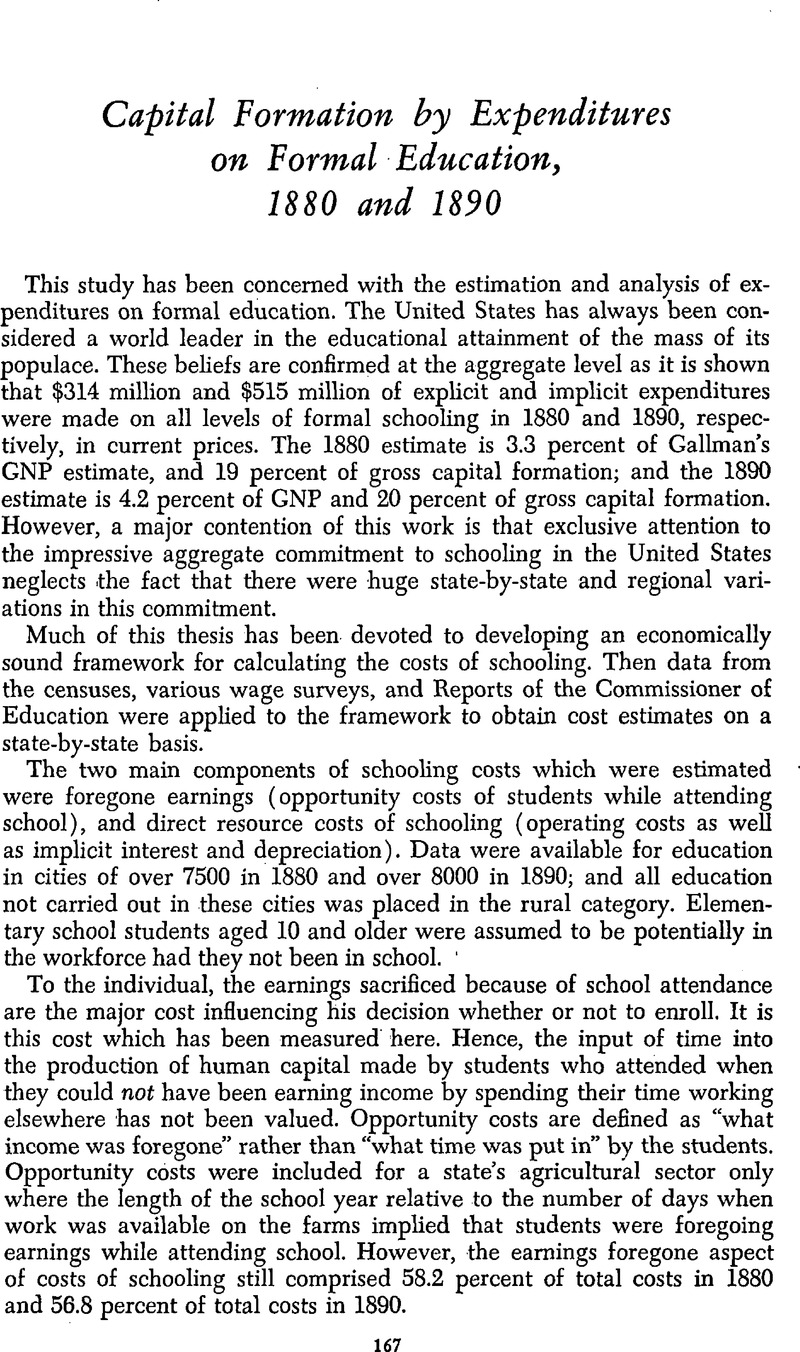No CrossRef data available.
Published online by Cambridge University Press: 03 February 2011

1 When income was in the regression with (a) total costs per school age population, an R2 of 0.5985 was obtained; with (b) total costs per capita, the R2 was 0.4323; with (c) government spending, the R2 was 0.6190; with (d) man-days attended per school age population, the R2 was 0.3040; with (e ) percent enrolled of population 5 to 18, the R2 was 0.2018; and with (f) the fraction of income devoted to schooling, the R2 was 0.0585.
2 The regressions run were of the form: log E = log k +f α log A + β log F + ≠ log W + δ log L + ρ log D + π log Y where E is education, A is percent of workers employed in agriculture, F is percent of population foreign, W is percent of population white, L is illiteracy, D is population density, Y is income per capita.
3 R2's for the six regressions with dependent variables corresponding to previous footnote were (a) 0.9202, (b) 0.8902, (c) 0.8962, (d ) 0.8663, (e) 0.7349, and (f) 0.7351.